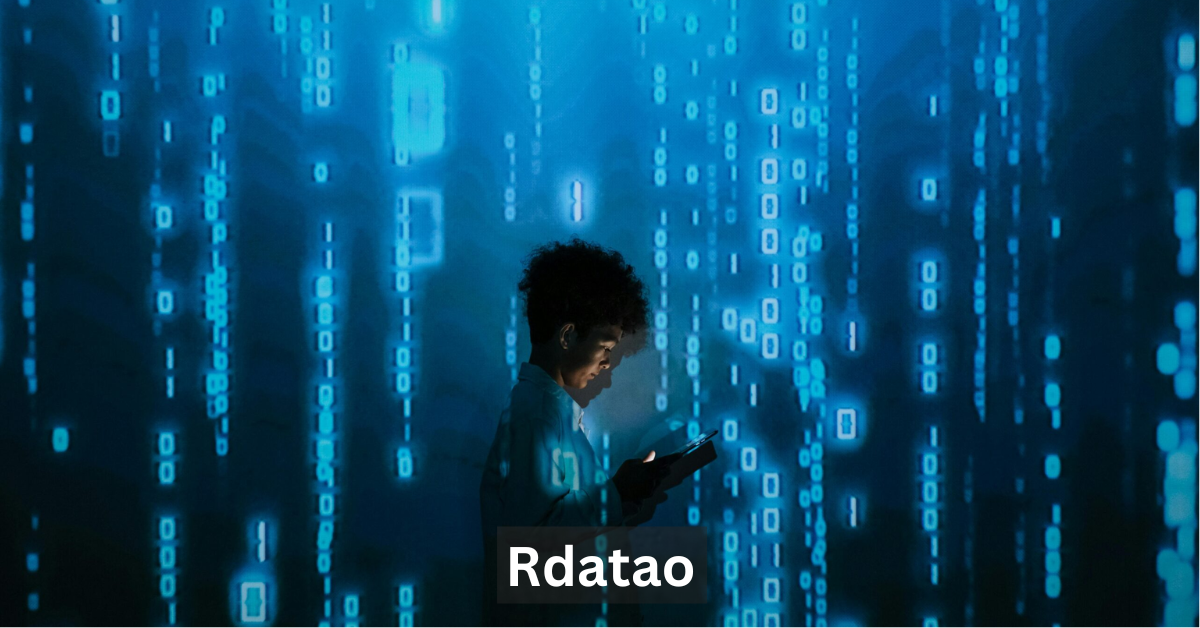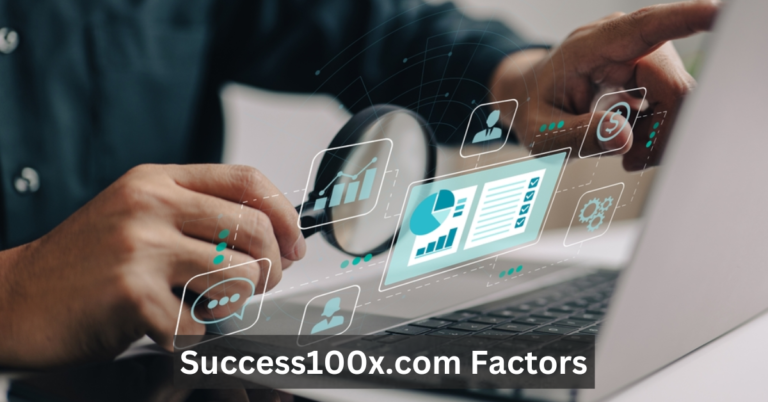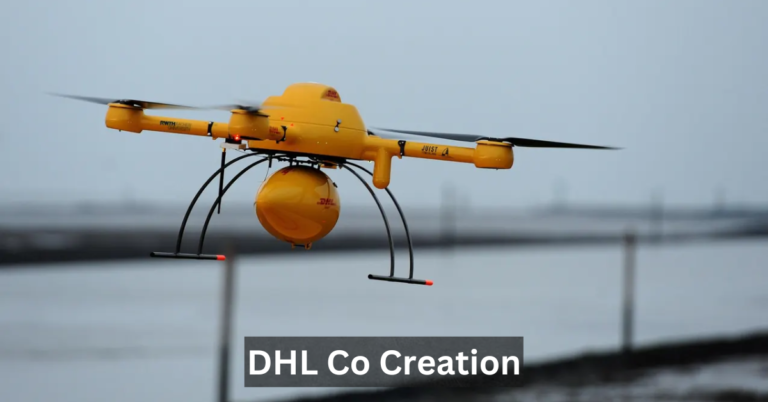Rdatao: Data Analysis and Optimization for Modern Businesses
In the digital age, where data is generated at an unprecedented rate, the ability to analyze and optimize this data—termed Rdatao—has become essential. This discipline encompasses a range of techniques and methodologies designed to collect, process, and analyze data to drive informed decision-making across various sectors. As organizations strive to remain competitive, understanding the intricacies of data analysis and optimization has never been more crucial.
Rdatao, short for “Data Analysis and Optimization,” is pivotal in today’s data-driven world. With the explosive growth of big data, organizations face the challenge of extracting meaningful insights from vast amounts of information. Rdatao serves as a framework that combines various data methodologies, enabling businesses to make data-driven decisions that enhance operational efficiency and drive innovation.
The increasing reliance on data has transformed industries, leading to a surge in demand for professionals skilled in Rdatao. These experts play a vital role in translating complex data into actionable insights, ensuring organizations can navigate market trends, customer behaviors, and operational efficiencies.
Understanding Rdatao
Definition and Scope
At its core, Rdatao integrates the principles of data science, statistical analysis, and machine learning to facilitate informed decision-making. It encompasses various processes, including data collection, preprocessing, analysis, visualization, and optimization. This comprehensive approach ensures that organizations can effectively utilize their data to enhance performance and gain a competitive edge.
Key Components of Rdatao
The fundamental components of Rdatao include data collection techniques, data preprocessing, data analysis methods, and data visualization. Each component plays a significant role in the overall process, ensuring that the data is accurate, relevant, and actionable. By understanding these components, organizations can implement effective data strategies that lead to improved outcomes and growth.
Data Collection Techniques
Sources of Data: Databases, APIs, Sensors
Effective data collection is the cornerstone of Rdatao. Organizations gather raw data from a multitude of sources, including databases, APIs, and sensors. Databases store structured data that can be easily accessed and analyzed, while APIs facilitate the integration of data from external sources. Sensors, particularly in IoT applications, provide real-time data that can enhance operational decision-making.
Best Practices for Effective Data Gathering
To ensure high-quality data collection, organizations should implement best practices, such as defining clear objectives, selecting appropriate data sources, and utilizing automated tools for data extraction. Furthermore, maintaining a robust data governance framework is essential for ensuring data quality and integrity, helping organizations avoid common pitfalls associated with inaccurate or incomplete data.
Data Preprocessing
Importance of Data Quality
Data quality directly impacts the effectiveness of data analysis. Inaccurate, incomplete, or inconsistent data can lead to misleading insights, which can adversely affect decision-making. Therefore, data preprocessing is crucial in ensuring that the data used for analysis is accurate and reliable.
Methods for Cleaning and Transforming Data
Data preprocessing involves several steps, including cleaning, transforming, and organizing raw data. Common techniques include handling missing values, removing outliers, and standardizing data formats. For example, organizations may use statistical methods to impute missing data points or apply normalization techniques to ensure consistent data representation.
Handling Missing Data and Outliers
Effective strategies for handling missing data and outliers include deletion, imputation, and transformation. Organizations can choose to eliminate data points with missing values, substitute them with calculated averages, or use machine learning algorithms to predict and fill in the gaps. Addressing outliers, which can skew results, is equally important and may involve analyzing the underlying causes to determine the best course of action.
Data Analysis Methods
Statistical Techniques
Data analysis utilizes various statistical techniques to uncover patterns, trends, and relationships within the data. Techniques such as regression analysis, hypothesis testing, and descriptive statistics allow organizations to draw meaningful conclusions from their data sets. By employing these techniques, organizations can identify correlations and anomalies that inform business strategies.
Introduction to Machine Learning Algorithms
Machine learning plays a significant role in Rdatao, enabling organizations to automate data analysis and derive predictive insights. Algorithms such as decision trees, clustering, and neural networks allow for sophisticated analyses that can adapt to changing data patterns. This adaptability is crucial for businesses aiming to stay ahead of the competition and respond swiftly to market dynamics.
Use of Programming Languages like R and Python
Programming languages such as R and Python are invaluable tools for data analysis. R offers extensive statistical libraries and visualization capabilities, making it ideal for complex analyses. Python, on the other hand, boasts a vast ecosystem of libraries, such as Pandas and NumPy, which facilitate data manipulation and analysis. Both languages are widely used in conjunction with frameworks like TensorFlow, PyTorch, and Scikit-learn for developing machine learning models.
Data Visualization
Importance of Data Visualization in Rdatao
Effective data visualization is crucial for interpreting complex data sets and communicating insights to stakeholders. Visual representations, such as graphs and charts, enable decision-makers to grasp trends and patterns quickly, making it easier to convey findings to non-technical audiences.
Tools for Creating Visual Representations
Several data visualization tools, including Tableau, Power BI, and Google Data Studio, empower professionals to create interactive and informative visualizations. These tools offer features that facilitate data exploration and enhance storytelling, allowing organizations to present their findings in compelling ways.
Best Practices for Effective Data Storytelling
To maximize the impact of data visualizations, organizations should follow best practices, such as using clear and concise labels, selecting appropriate chart types, and maintaining consistency in color schemes. Moreover, integrating storytelling elements can help engage audiences and drive action based on the insights presented.
Cloud Computing and Rdatao
Role of Cloud Services in Data Analysis
Cloud computing has revolutionized the way organizations handle data analysis by providing scalable computing resources and storage solutions. Cloud services enable organizations to process large volumes of data efficiently, facilitating faster insights and reducing the need for substantial on-premise infrastructure.
Comparison of Major Cloud Providers (AWS, Azure, GCP)
Leading cloud service providers such as AWS, Microsoft Azure, and Google Cloud Platform (GCP) offer robust platforms for data management and analysis. Each provider has unique features, pricing models, and service offerings, allowing organizations to choose the best fit for their specific needs. For instance, AWS excels in its wide array of tools and services, while Azure integrates seamlessly with Microsoft applications.
Advantages of Cloud-Based Data Management
The advantages of cloud-based data management include flexibility, cost-effectiveness, and enhanced collaboration. Organizations can easily scale resources up or down based on demand, reducing costs associated with underutilized infrastructure. Additionally, cloud platforms facilitate collaboration among teams, allowing for real-time data sharing and analysis.
Applications of Rdatao
Healthcare: Personalized Medicine and Medical Research
In the healthcare sector, Rdatao plays a transformative role by enabling personalized medicine and advancing medical research. By analyzing patient data, healthcare professionals can tailor treatments to individual needs, improving patient outcomes and satisfaction. Furthermore, Rdatao aids in identifying patterns in large data sets, accelerating drug discovery processes, and enhancing public health initiatives.
Finance: Risk Management and Fraud Detection
Rdatao is equally vital in the finance industry, where it supports risk management and fraud detection efforts. By analyzing market data and customer transactions, financial institutions can identify potential risks and implement measures to mitigate them. Machine learning algorithms enhance fraud detection capabilities by identifying unusual patterns and flagging suspicious activities in real-time.
Retail: Inventory Management and Customer Behavior Analysis
In retail, Rdatao optimizes inventory management and enhances customer experience by predicting consumer behavior. Analyzing customer purchasing patterns enables retailers to forecast demand accurately, reducing stockouts and overstock situations. Additionally, personalized marketing strategies derived from data insights can improve customer satisfaction and loyalty.
Ethical Considerations
Data Privacy Laws (GDPR, CCPA)
As organizations increasingly rely on data, ethical considerations surrounding data privacy have gained prominence. Compliance with data privacy laws, such as the General Data Protection Regulation (GDPR) and the California Consumer Privacy Act (CCPA), is essential to protect consumer rights and foster trust. Organizations must implement robust data governance frameworks to ensure compliance and accountability in data handling practices.
Importance of Ethical Data Handling
Ethical data handling is vital to maintain public trust and prevent reputational damage. Organizations should prioritize responsible data usage and transparency, ensuring that consumers are informed about how their data is collected and used. By adopting ethical guidelines, organizations can mitigate risks associated with data misuse and enhance their brand reputation.
Addressing Bias in Data Analysis
Bias in data analysis can lead to skewed results and reinforce stereotypes. Organizations must actively address bias by implementing diverse data collection methods and utilizing algorithms designed to minimize bias in outcomes. Promoting diversity and inclusion in data science teams can also contribute to more equitable data practices.
Future Trends in Rdatao
Impact of IoT and AI on Data Analysis
The integration of Internet of Things (IoT) devices and artificial intelligence (AI) is poised to revolutionize data analysis in Rdatao. IoT devices generate real-time data, providing organizations with unprecedented insights into operational performance and customer behavior. AI algorithms will enhance predictive analytics, enabling organizations to make proactive decisions based on real-time data.
Innovations in Machine Learning and Analytics
Continued advancements in machine learning and analytics tools will further empower organizations to derive insights from their data. Innovations such as automated machine learning (AutoML) and Innovations in machine learning and analytics tools are set to further empower organizations in their data-driven endeavors. Advances like automated machine learning (AutoML) streamline the process of building and deploying machine learning models, making it accessible to non-experts. Techniques such as transfer learning and reinforcement learning are gaining traction, allowing for improved performance and adaptability in dynamic environments. Moreover, the incorporation of natural language processing (NLP) enables organizations to analyze unstructured data from sources like social media and customer feedback, unlocking valuable insights.
The Rise of Edge Computing
With the proliferation of IoT devices, edge computing is becoming increasingly relevant. This approach processes data closer to its source, reducing latency and bandwidth usage. By enabling real-time data analysis at the edge, organizations can respond quickly to emerging trends and operational changes, enhancing decision-making capabilities.
Growing Importance of Data Literacy
As the reliance on data analysis increases, the demand for data literacy across all organizational levels is paramount. Training employees to interpret and utilize data effectively can drive innovation and foster a data-driven culture. Organizations that prioritize data literacy will be better equipped to leverage insights and respond to market changes.
Conclusion
Rdatao encompasses a comprehensive suite of methodologies aimed at transforming raw data into actionable insights. By leveraging data collection techniques, preprocessing methods, analytical tools, and visualization strategies, organizations can unlock the full potential of their data. The integration of cloud computing, IoT, and AI will continue to shape the future of data analysis and optimization, enabling businesses to thrive in an increasingly competitive landscape.
As organizations navigate the complexities of the data landscape, embracing Rdatao will be crucial for achieving sustainable growth and success. Prioritizing ethical data handling, fostering data literacy, and staying abreast of emerging trends will empower businesses to make informed decisions and harness the power of data for strategic advantage.
Frequently Asked Questions
What is Rdatao?
Rdatao, short for “Data Analysis and Optimization,” is a field within data science focused on gathering, processing, and analyzing data to drive informed decision-making across various sectors.
How does Rdatao impact businesses?
Rdatao plays a crucial role in business by enabling organizations to leverage data insights for strategic initiatives, enhancing operational efficiency, and improving customer experiences through data-driven decisions.
What tools are commonly used in Rdatao?
Common tools in Rdatao include programming languages like R and Python, machine learning frameworks such as TensorFlow and Scikit-learn, and data visualization platforms like Tableau and Power BI.
What are the ethical considerations in Rdatao?
Ethical considerations in Rdatao involve ensuring data privacy, adhering to laws like GDPR and CCPA, and addressing potential biases in data analysis to foster trust and transparency.
What future trends should we expect in Rdatao?
Future trends in Rdatao include the rise of edge computing, increased importance of data literacy, and advancements in AI and machine learning, which will further enhance data analysis capabilities.
Stay in touch to get more updates & alerts on EroMe! Thank you






